Acura Integra A-Spec Vs Mazda3 Turbo Comparison: Autoboxes Assemble

What we have here are two hatchbacks looking to separate themselves from their respective histories.
Both the reborn Acura Integra and turbocharged Mazda3 are, fairly or not, judged against what came before. When Mazda dropped its muscular turbo engine into the pretty current-gen Mazda3 hatchback, visions of reborn Mazdaspeed3 clouded some enthusiasts minds. Meanwhile the Integra’s revival had many pining for the buzzy GS-R and Type R of the late ’90s—nevermind that those made up just a tiny fraction of Integra production.
Get a Quote on a New Acura Integra or Mazda3No, these two hatchbacks are not a continuation of past models. They couldn’t be. Instead, both the Integra and Mazda3 target a more premium portion of the market. There’s still more driving fun to be had in either of these than the boggo-spec German alternatives, too. Which one is the better buy? Managing editor Mike Schlee and I spent a week with both to find out.
Interior and Cargo Space
Integra: As is tradition, the Integra shares much with the Honda Civic. That’s even more true for the latest model, which borrows much of its interior design from the its humbler sibling. The center console is practically identical, though Acura has employed piano black instead of the pinstripe texture in the Civic—a step backwards in our minds. The dashboard breaks up the strip of mash that dominates the Civic dashboard, and adds some overlaying segments on top. Pair that with a more angular instrument instrument panel cowl and you’ve got a handsome, spacious place to be. Is it more Civic-like than previous generations? Yes, but the Civic is one of the nicest interiors in its class, so that’s no insult.
The front seats are mounted nice and low. Taller drivers will appreciate the longer bottom cushion, and the supportive (but not aggressive) side bolstering. Hondas typically have excellent driver positions, and the Integra follows that tradition. That low seating position allows the Integra to just slightly beat the Mazda3 in the headroom race, with 37.6 inches (955 millimeters). Legroom is an identical 42.3 inches (1,074 mm) for both cars. Another thing they both share: huge C-pillars. The Integra’s sightlines are ever so slightly better, with at least a tiny rear-quarter window. Let’s just say we’re happy it has blind-spot monitoring and rear cross-traffic alert.
Rear-seat space is where the Integra earns its first clear victory. Simply put, it’s the better pew to spend time in, especially as an adult. There’s over two inches more legroom, and the flatter windowline lets more natural light in. There is slightly less hip and shoulder room here, but that’s not enough to keep the Integra down.
While the Integra keeps a liftback shape like the models of yore, it’s still the more useful space. Sure, the load lip is higher, but clear that and you’ve got 24.3 cubic feet (688 liters) of storage with the seats up. Acura doesn’t quote a seats-down figure, but considering the Integra’s more spacious back row, we wouldn’t be surprised if it maintains its lead there.
Mazda3: The current Mazda3 is a few years old now, yet its interior remains one of the best you can find under $50,000. The dashboard layout is stylish and minimalist, centering all the important physical controls easily within reach. Every surface feels good to touch, from the buttery soft steering wheel to the door panels. Mazda definitely has the edge in material quality here. That being said, the Integra’s clicky rotary dials do offer a unique tactile experience the Mazda’s lack. Overall though, this is still the better interior.
Mazda badges this 3 Turbo as GT in Canada, and the grand touring ambitions make sense as soon as you drop in the front seat. It’s a little more accommodating than the Integra’s: higher position, less aggressive bolstering. The Mazda is no less comfortable however, with a wide range of adjustments and practically identical front passenger space.
Hopping into the rear seats is a stark—and dark—contrast. The windowline climbs right to the top of the headrests, making the second row feel claustrophobic. Not only that, but the 3’s meager 35.1 inches (892 mm) of legroom is the unwanted sort of premium. In practice, the difference feels even greater than the spec sheets suggest. While the seats themselves are fine, adults will find the Mazda’s back seat cramped compared to the spacious Integra’s.
That pretty hatchback shape doesn’t lend itself to capacious cargo carrying, either. Mazda quotes 20.1 cu-ft (569 L) behind the rear seats, which more than doubles to 47.1 cu-ft (1,334 L) when running in two-seat mode.
SEE ALSO: Mazda CX-30 vs Mercedes-Benz GLA Comparison: Lofty AspirationsBottom Line: The winner of this category depends on your priorities. If you’re regularly planning on sticking actual people in the back seat, and space is more important, than the Integra is the clear choice. More of a front-seats-only situation? The Mazda’s interior is the nicer one.
Tech and Features
Integra: Going for the Tech/Elite package bumps the Integra’s central touchscreen to a larger 9.0 inches. Not only that, it makes Apple CarPlay and Android Auto wireless. The Integra’s wireless charge pad is small, but at least it has one.
The infotainment system itself is not going to win any style awards. Yes, it’s the Civic’s. But it’s both a) better than the Mazda’s, and b) better than any other Acura’s, and that aggravating trackpad. The menus are plain and easy to navigate. Whether Acura can truly compete against the likes of BMW and Audi is another matter entirely, but in this head-to-head, the Integra’s infotainment is the clear winner.
The rest of the package is pretty swell, too. The digital instrument cluster is sharp, and provides plenty of key information. We like the visuals for the adaptive cruise control, not to mention the ability to see navigation from third-party apps via CarPlay, right there ahead of the driver. Yes please. The Acura’s head-up display (HUD) is more useful, as well. The 16-speaker ELS Studio 3D sound system is excellent, with crisp highs and lots of power.
On the safety front, the Integra comes with all the standard kit you’d expect, including automated emergency braking, parking sensors, lane-keep assist, blind spot monitoring with rear cross-traffic alert, and adaptive cruise control. It lacks the Mazda’s 360-degree camera, however.
Mazda3: Oh Mazda. Your 8.8-inch non-touchscreen infotainment system is minimalism too far. It’s simple to look at, but a pain to operate via the console-mounted rotary dial, especially in (wired) Apple CarPlay and Android Auto. We’re a broken record here, but just in case: we acknowledge Mazda’s safety concerns, but this setup punishes passengers who just want to change radio stations.
Beyond that, the Mazda’s tech suite is solid. The high points are its 360-degree camera and the 12-speaker Bose sound system; the latter isn’t a match for the Integra’s ELS setup, but it’s close. We’re sad the Mazda doesn’t offer its front passenger any power adjustment, but at least the driver has a memory seat function. Safety features are robust, including a natural-driving adaptive cruise control, front and rear parking sensors, rear cross-traffic alert with blind-spot monitoring, automated emergency braking, and more.
SEE ALSO: Honda Civic Si vs Volkswagen Golf GTI vs Hyundai Elantra N: Sport Compact ShootoutBottom Line: These two are fairly closely matched on the tech front. The Mazda has the advantage of an around-view camera—handy when you’ve got those C-pillars to deal with—but it’s also saddled with an awkward infotainment screen, and a simplistic instrument panel. The Integra pulls ahead here.
Powertrain, Driving Feel, and Fuel Economy
Integra: Unlike previous generations of Integra, this one comes with just one powertrain option (at least for now). A 1.5-liter turbocharged four cylinder sends power to the front wheels, to the tune of an even 200 horsepower and 192 pound-feet of torque. Most models, including this tester, run a continuously variable transmission (CVT), the first time Honda has paired its not-a-gearbox to this particular tune of the 1.5T. (Yes, we realize that makes the title technically inaccurate. Sorry!) With torque coming on early and sticking around for a good chunk of the rev range, it’s a solid everyday workhorse, quick enough but not shocking. Funnily enough, the rev hang that we found in the Civic Si is less noticeable here, because CVT and all that.
One thing the Civic Si doesn’t get to claim is the adaptive damper system present on the Integra A-Spec. This setup allows for a greater spread of characteristics within the selectable drive modes. Drop into Comfort and the Integra has a smooth demeanor, with light steering and dulled throttle response. Sport heads to the other end of the spectrum, with more body control and tighter responses. Crucially, it never feels too firm for the road. An Individual setting allows drivers to tailor the settings to their own preferences. Highway driving is calm and collected, with minimal wind noise.
No matter the driving mode, the Integra feels light on its feet next to the Mazda3. Part of this is undoubtedly its curb weight (3,150 lb / 1,429 kg vs 3,393 lb / 1,539 kg). Wider 235-section tires also have it feeling more responsive, with sharp turn-in. The Integra is more predictable through corners too, since there’s no second-guessing how much the AWD brain will shift power to the rear axle. That said, it’s also less adjustable mid-corner, and less steering weight to lean on when you’re there. The Integra will scrabble for grip out of tight corners; the manual-transmission model gains a mechanical front LSD to remedy this.
The CVT won’t fool anyone into thinking it’s a traditional auto. But it keeps the rubberbanding to a minimum, thanks to the generous torque plateau. Manual mode is fun enough, with quick responses on the way up but not down. That said, Honda makes some of the very best manuals in the business. If you can drive stick, take that one.
Fuel economy is a clear Integra strength, what with an engine a full liter smaller. The EPA quotes 29 mpg city, 36 mpg highway, and 32 mpg combined, figures we were able to easily beat. Canadian equivalents are 8.1, 6.5, and 7.4 L/100 km, respectively. You will have to feed it from the 91 pump, though.
Mazda3: Dropping Mazda’s flexible 2.5-liter turbo-four under the low hood of the 3 is the 2022 equivalent of a muscle car. While you can just make out the distant turbo noise, it mostly acts like a big-displacement six-cylinder, with oodles of torque. On premium fuel, the Mazda will spit out 250 hp and 320 lb-ft, but even on the cheap stuff us peasants use more often, it still does 227 hp and 310 lb-ft. A six-speed auto shuffles power through Mazda’s clever AWD system.
Thing is, we as journalists don’t know what fuel the last person put in was. “Mazda feels faster as it should with 50 hp,” noted Schlee, “but it doesn’t feel nearly 50 hp faster. Maybe 10 at best.” We know the Mazda’s chunky curb weight has something to do with it, but even then, the 3 doesn’t start showing its advantage until we’re passing on the highway. The six-speed’s wide spread of ratios could be to blame too, versus the always-on nature of the Integra’s CVT. The extra liter of swept volume does give the Mazda better low-rpm push, however.
Out on the backroads, the Mazda’s ride is brittle. It lacks the adaptive dampers of its competitor, and the result is a crashiness as its 18-inch wheels find every bump in the tarmac. You know that feeling when you’ve been wearing sneakers all summer, only to switch into heavier boots when autumn hits? Yeah, that. The Mazda’s narrow 215-section tires have it feeling less positive on initial turn-in, too. Once the i-Activ AWD starts doing its thing, the 3 begins to feel more malleable in the corners. It’s a little softer, a little looser than the pointy Integra, but the Mazda gives its driver more options.
To its credit, the Mazda’s big-bore engine makes for a better soundtrack. The Acura is louder outside than you’d expect, but it uses artificial engine noise inside the cabin. Boo, hiss. The big engine does come with added running costs: just 23 mpg city and 31 mpg highway, for 26 mpg combined. Canadian figures are 10.1, 7.5, and 8.9 L/100 km, respectively.
Bottom Line: We’re suckers for a light, pointy compact car, and the Integra is just that. The adaptive dampers give it a broad range of driving modes, whereas the Mazda3 can just be too firm at times. The Mazda’s engine also doesn’t have the clear advantage its on-paper specs suggest. Neither transmission is obtrusive, nor are they a match for the best dual-clutchers in this segment. The Mazda’s AWD would be an advantage in bad weather, but here in the tail-end of summer, it just felt like extra weight.
Styling
Integra: The Integra certainly follows the current house styling. Those less generous would say it’s merely an ILX hatchback—since this replaces the ILX, y’know, fair. But Acura’s found its groove with the current design language. Squinty headlights, a frameless grille, attractive split-five-spoke wheels: the Integra is a sharp-looking compact.
Both Mike and I wish it actually looked like, well, an Integra. The debossed name under the headlight and taillight is a nice touch, as is the little notch to lift the hatch. But beyond those small touches and the name, there’s no visual DNA to link this to Integras past.
Mazda3: Time has not dulled the impact of the Mazda3’s looks. This remains one of the very best compact car designs out there, even if it sacrifices usefulness for those sultry looks. Hello, huge C-pillar. The low nose, clean surfacing, and elegant lighting elements combine to give the Mazda3 major presence. Acura’s red might be nice, but Soul Red is still the best red in the business. No, I will not be taking questions at this time.
The turbo gets some subtle styling tweaks to set it apart from lesser 3s. These consist of mostly blacked-out trim pieces, as well as the side mirrors. The 18-inch wheels can’t avoid the treatment, which unfortunately does feel played out here in 2022. We want to see the wheel design, Mazda!
Bottom Line: Neither one of these cars looks bad. We all have our own tastes, but for us, the Mazda is still the belle of the compact car ball.
SEE ALSO: Toyota GR86 vs Subaru BRZ vs Mazda MX-5 Miata: Simple PleasuresPricing and Value
Integra: Acura has kept the Integra’s lineup pleasantly simple for this latest generation. Basically, there is a $5,000 spread between entry level and loaded. The first step on the ladder rings in at $31,895 ($36,725 CAD) including destination, and nets buyers LED head- and taillights, blind spot monitoring, the digital instrument cluster, 17-inch wheels, and the CVT. The A-Spec is the only other trim, and it’s then available with the Tech package (Elite in Canada). That’s what you’re looking at here, with the $37,395 ($45,425 CAD) bottom line taking into account the premium Performance Red Pearl paint ($500 / $500 CAD). This top package includes the larger infotainment screen, wireless phone mirroring, power passenger seat, microsuede seating, dual automatic climate control, 18-inch wheels, and ELS audio. The six-speed manual is a no-cost option for the Tech/Elite only.
Mazda3: Like the Integra, this Mazda3 represents the top of its respective trim walk. In the US, it goes by the name of 2.5 Turbo Premium Plus and lists for $36,960 including destination, with the only option being the $595 Soul Red paint. Opting for the Premium Plus nets drivers parking sensors, a 360-degree camera, 12-speaker Bose sound system, and of course the AWD and turbo engine.
A turbocharged Mazda3 is a relative bargain in Canada, where the simply-named GT goes for $38,500 CAD (including $450 CAD for Soul Red). Since we tested the car, that price has shot up $800 CAD, but it’s still dramatically lower than the Integra north of the border.
Since it also comes in more humble forms, you can net a basic Mazda3 for much less than the entry point of the Acura, too. You won’t find the power, features, or safety assists that you do in either of these testers, but at as little as $22,215 ($23,150 CAD), the Mazda3 is one of the most affordable new cars on the market.
SEE ALSO: Mini Cooper S vs Mazda 3 Turbo Comparison: Little(ish) Bundles of JoyBottom Line: As is increasingly the case in our comparisons, the subject of pricing is a regional one. In the US, these two are an Xbox apart, which makes the Integra the comparative good deal. But in Canada you’re looking at a difference of nearly $7,000 CAD. Is the Integra worth almost 20-percent more in the land of Timbits? Hell no.
Verdict: Acura Integra A-Spec vs Mazda3 Turbo Comparison
I’ll admit it: heading into this comparison I thought the Mazda3 Turbo had it sewn up. It’s quicker, it’s AWD, and it’s prettier.
But on the road, the Mazda came up short. The rough ride was the main culprit, making the 3 a tougher day-to-day proposition than the happy Integra. The Acura drives with a lightness that’s rare these days, and its better infotainment and sweet ELS audio system make it a more agreeable everyday companion. We didn’t even really hate the CVT.
Yes, in colder climes the Mazda’s AWD system is a major advantage. And in Canada, where you’re pretty much guaranteed to encounter snow at some point, its seven-grand price advantage makes it an easy choice.
In the US, where both cars are practically the same price, he Integra was the smoother, more satisfying drive, one that still impressed when we wanted some fun. It’s a welcome return, and the winner here.
Become an AutoGuide insider. Get the latest from the automotive world first by subscribing to our newsletter here.

Kyle began his automotive obsession before he even started school, courtesy of a remote control Porsche and various LEGO sets. He later studied advertising and graphic design at Humber College, which led him to writing about cars (both real and digital). He is now a proud member of the Automobile Journalists Association of Canada (AJAC), where he was the Journalist of the Year runner-up for 2021.
More by Kyle Patrick



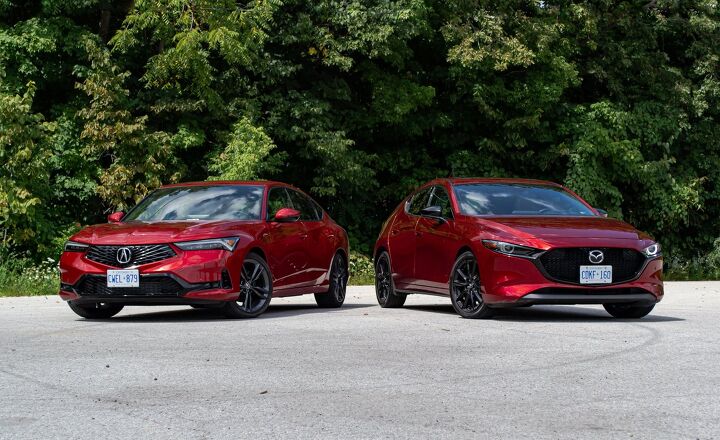
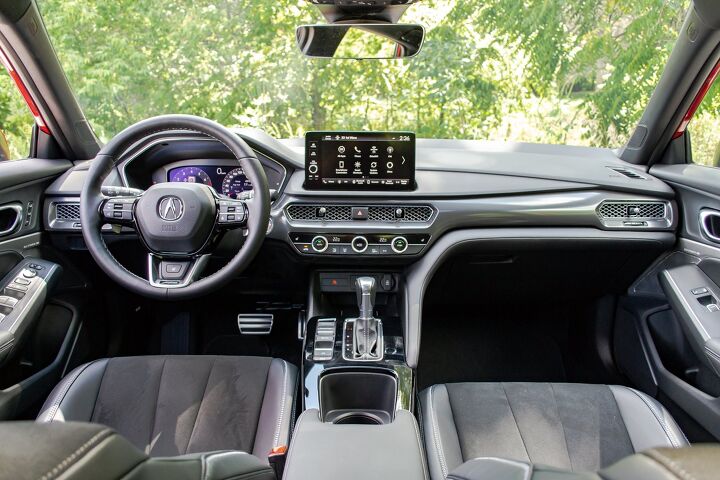

































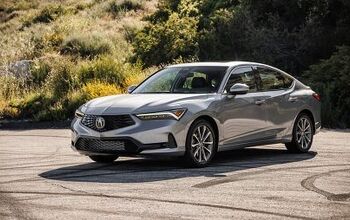
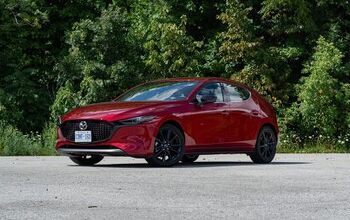
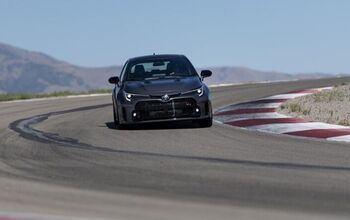
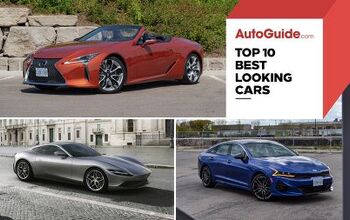












Comments
Join the conversation
If you spent the time and knew how Mazda's infotainment system worked, you'd realized that the passenger can change the channels. The volume knob on the center consol is like a joystick. Left and right changes channels or songs when streaming. The system really isn't that difficult when you know how to use it.
Not sure why it's so hard for car reviewers to get this right, but the Mazda 3 AWD Turbo is available in a regular "base" but still premium trim for $4k less. The Premium Plus adds the aero kit, 360 cameras, real leather instead of fake and full stop and go traffic assist. The Premium "base" AWD Turbo still includes the important bits like HUD with neighbouring car proximity, blind spot detection, Bose stereo, sunroof, adaptive LED's, etc. Also, some very minor mods help tremendously. Upgrading wheels and tires to the proper 235 width adds grip, steering feel and helps settle the torsion beam shudder some, a strut tower brace provides even more responsive steering. Slightly lower and softer springs from JDM brand Tein reduce harshness while also reducing body roll and the stability control, I.E. Brake vectoring from taking over far less often, without having to disable traction control every drive. The Integra is a nice car, but there are plenty of solid FWD options and how many non Audi AWD options with a near lux interior AND a bit of diving fun around $35k in a still useful hatch are there? It's worth the upgrades, you can't give the Integra 320 lb/ft of torque that easily.